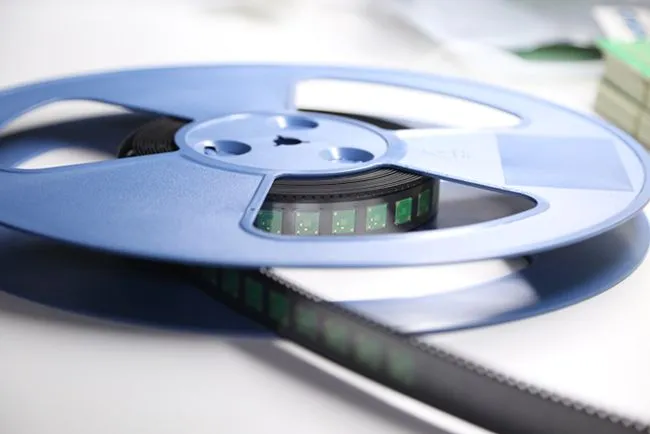The Evolution and Applications of Flexible PCBs
Flexible PCBs have come a long way since their inception, evolving to meet the ever-changing demands of the electronics industry. These versatile circuit boards have found applications in numerous sectors, revolutionizing product design and functionality.
Historical Development of Flexible PCBs
The concept of flexible printed circuits dates back to the early 20th century, with patents filed as early as 1903. However, it wasn't until the 1960s that flexible PCBs gained significant traction in the electronics industry. The space race and military applications drove the initial development and adoption of flexible circuits, as they offered significant weight savings and improved reliability in harsh environments.
Over the decades, advancements in materials science and manufacturing techniques have led to the creation of more robust, reliable, and versatile flexible PCBs. The introduction of polyimide films in the 1960s marked a significant milestone, providing a durable and heat-resistant substrate that remains widely used today.

Diverse Applications Across Industries
Flexible PCBs have found their way into a wide array of applications, transforming various industries:
- Consumer Electronics: Smartphones, tablets, and wearable devices benefit from the space-saving and design flexibility of flexible PCBs, allowing for sleeker, more compact products.
- Automotive: Modern vehicles incorporate flexible PCBs in dashboard displays, engine control units, and advanced driver assistance systems (ADAS), improving reliability and reducing weight.
- Aerospace: Satellites and aircraft utilize flexible PCBs to minimize weight and withstand extreme conditions, enhancing fuel efficiency and performance.
- Medical Devices: Implantable devices, hearing aids, and diagnostic equipment leverage flexible PCBs for their biocompatibility and ability to conform to complex shapes.
- Industrial Automation: Robotic systems and manufacturing equipment benefit from the durability and flexibility of these circuits in high-stress environments.
Emerging Trends and Future Prospects
The flexible PCB market continues to grow, driven by emerging technologies and evolving consumer demands. Some notable trends include:
- Wearable Technology: The rise of smart clothing and fitness trackers has created a surge in demand for flexible circuits that can withstand repeated bending and stretching.
- Internet of Things (IoT): Flexible PCBs enable the creation of small, interconnected devices crucial for the expanding IoT ecosystem.
- 5G Infrastructure: The rollout of 5G networks requires compact, high-performance circuits, making flexible PCBs an ideal choice for telecommunication equipment.
- Flexible Displays: As foldable and rollable displays gain popularity, flexible PCBs play a crucial role in their development and functionality.
As technology continues to advance, the applications for flexible PCBs are expected to expand further, driving innovation across various industries and paving the way for more sophisticated and compact electronic devices.
Key Advantages of Flexible PCBs in Modern Electronics
Flexible PCBs offer a multitude of benefits that make them indispensable in modern electronics. These advantages have propelled their adoption across various industries and continue to drive innovation in product design and functionality.
Enhanced Design Flexibility and Space Optimization
One of the most significant advantages of flexible PCBs is their ability to conform to unique shapes and contours. This characteristic allows designers to create products with complex geometries that would be impossible with rigid PCBs. The flexibility to bend, fold, and twist enables:
- 3D Space Utilization: Flexible PCBs can be shaped to fit into tight or irregularly shaped spaces, maximizing the use of available volume in electronic devices.
- Dynamic Flexing: These circuits can withstand repeated bending or flexing, making them ideal for applications with moving parts or those requiring frequent adjustment.
- Miniaturization: The ability to fold and layer flexible PCBs allows for the creation of more compact devices, crucial in the development of smaller consumer electronics and medical implants.
Improved Reliability and Durability
Flexible PCBs offer enhanced reliability compared to their rigid counterparts, particularly in challenging environments and applications requiring repeated movement:
- Vibration Resistance: The flexible nature of these circuits allows them to absorb shocks and vibrations more effectively, reducing the risk of component failure in high-stress environments.
- Thermal Management: Flexible PCBs can dissipate heat more efficiently due to their larger surface area and thinner profile, improving overall system reliability.
- Reduced Interconnection Points: By eliminating the need for multiple rigid boards and connectors, flexible PCBs reduce potential failure points, enhancing overall system reliability.
Weight Reduction and Cost-Effectiveness
The lightweight nature of flexible PCBs offers significant advantages in various applications:
- Aerospace and Automotive: Weight reduction is crucial in these industries, where every gram saved translates to improved fuel efficiency and performance.
- Portable Electronics: Lighter components contribute to the creation of more user-friendly, portable devices.
- Cost Savings: While the initial cost of flexible PCBs may be higher, they often lead to overall cost savings through reduced assembly time, fewer interconnects, and improved reliability.
These advantages make flexible PCBs an attractive option for designers and engineers seeking to push the boundaries of electronic device capabilities while maintaining or improving reliability and performance.
Manufacturing Processes and Design Considerations for Flexible PCBs
The production of flexible PCBs involves specialized manufacturing processes and unique design considerations to ensure optimal performance and reliability. Understanding these aspects is crucial for engineers and designers working with flexible circuits.
Manufacturing Techniques for Flexible PCBs
The production of flexible PCBs involves several key steps and techniques:
- Material Selection: Polyimide is the most common substrate material due to its excellent flexibility, heat resistance, and dimensional stability. Other materials like polyester may be used for less demanding applications.
- Copper Deposition: A thin layer of copper is bonded to the flexible substrate, typically through roll-to-roll processing for high-volume production.
- Photolithography: The circuit pattern is created using photoresist and UV exposure, similar to rigid PCB manufacturing but with considerations for the flexible substrate.
- Etching: Excess copper is removed through chemical etching, leaving behind the desired circuit pattern.
- Cover Layer Application: A protective cover layer, often made of polyimide, is applied to protect the copper traces and provide insulation.
- Drilling and Cutting: Precision drilling and cutting techniques are used to create vias and define the final shape of the flexible PCB.
Design Considerations for Flexible PCBs
Designing flexible PCBs requires careful consideration of several factors:
- Bend Radius: The minimum bend radius must be considered to prevent damage to the copper traces and ensure reliable operation.
- Neutral Axis: Proper placement of copper layers with respect to the neutral axis can minimize stress on the traces during flexing.
- Trace Geometry: Rounded corners and optimized trace widths help distribute stress and improve flexibility.
- Component Placement: Rigid components should be placed in areas with minimal flexing to prevent solder joint failure.
- Layer Stack-up: The arrangement of copper and dielectric layers impacts the overall flexibility and performance of the PCB.
- Strain Relief: Incorporating strain relief features helps protect solder joints and connection points from mechanical stress.
Quality Control and Testing
Ensuring the reliability of flexible PCBs requires rigorous quality control measures:
- Electrical Testing: Continuity and impedance tests verify the integrity of the circuit.
- Mechanical Testing: Flex and bend tests simulate real-world conditions to ensure durability.
- Environmental Testing: Exposure to temperature extremes, humidity, and other environmental factors helps validate the PCB's performance in various conditions.
- X-ray Inspection: Non-destructive testing techniques like X-ray inspection can identify internal defects or misalignments.
By adhering to these manufacturing processes and design considerations, engineers can create flexible PCBs that meet the demanding requirements of modern electronics while maximizing their unique advantages.
Conclusion
Flexible PCBs have emerged as a game-changing technology in the realm of modern electronics, offering a myriad of benefits that cater to the evolving demands of various industries. Their ability to conform to unique shapes, withstand repeated bending, and occupy minimal space has revolutionized product design across consumer electronics, automotive, aerospace, and medical sectors. As the demand for smaller, lighter, and more versatile electronic devices continues to grow, the importance of flexible PCBs in driving innovation cannot be overstated.
The advantages of flexible PCBs, including enhanced design flexibility, improved reliability, and cost-effectiveness, make them an attractive option for electronics manufacturers and designers alike. Partnering with experienced Flexible PCBs manufacturers ensures that these benefits are fully realized, as they can provide the technical expertise, material selection guidance, and production capabilities needed to deliver high-quality flexible circuits tailored to specific application requirements. As technology advances, we can expect to see even more innovative applications and improvements in flexible PCB technology, further solidifying their position as a crucial component in the electronics industry.
For companies seeking reliable flexible PCB suppliers and manufacturers, it's essential to partner with experienced providers who understand the unique challenges and requirements of this technology. By choosing a reputable flexible PCB manufacturer, businesses can ensure they receive high-quality, dependable components that meet their specific needs and drive their products' success in the competitive electronics market.
FAQ
What are the main advantages of flexible PCBs over rigid PCBs?
Flexible PCBs offer enhanced design flexibility, space optimization, improved reliability, and weight reduction compared to rigid PCBs. They can conform to unique shapes, withstand repeated bending, and are ideal for applications with space constraints.
In which industries are flexible PCBs commonly used?
Flexible PCBs find applications in various industries, including consumer electronics, automotive, aerospace, medical devices, and industrial automation. They are particularly useful in products requiring compact designs or those subject to frequent movement or vibration.
What are the key design considerations for flexible PCBs?
Important design considerations include bend radius, neutral axis placement, trace geometry, component placement, layer stack-up, and strain relief. These factors ensure the PCB's reliability and performance in flexible applications.
Experience the Benefits of Flexible PCBs with Ring PCB | Ring PCB
At Ring PCB, we leverage our expertise in flexible PCB manufacturing to deliver innovative solutions tailored to your specific needs. Our team of over 500 professionals, including R&D specialists and skilled technicians, ensures top-quality flexible PCBs that meet the highest industry standards. With our 24/7 operation and global support, we offer seamless collaboration and timely delivery of your flexible PCB projects. Trust Ring PCB as your reliable flexible PCB supplier and manufacturer. Contact us at [email protected] to explore how our flexible PCB solutions can enhance your electronics products.





